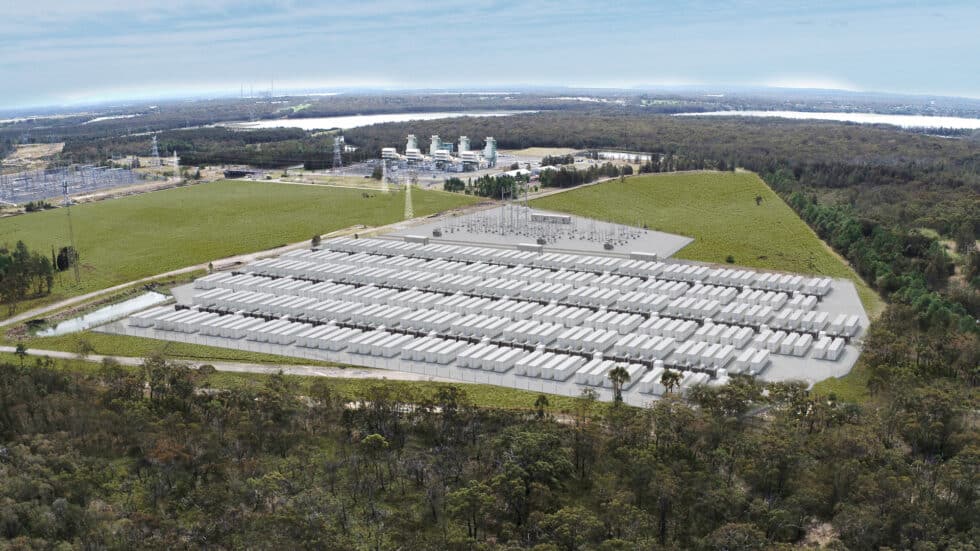
Wendel Hortop, director of Australia at Modo Energy, has indicated that over 4GW of utility-scale battery energy storage systems (BESS) on the National Electricity Market (NEM) will be in commercial operation by 2025, with over 90% of these in construction or commissioning.
Speaking exclusively to ESN Premium, Hortop noted that this pipeline includes the 1,680MWh Waratah Super Battery, described as a “giant shock absorber” for Australia’s power grid and being developed by Akaysha Energy, which is one of the largest BESS expected to enter commercial operations this year.
Enjoy 12 months of exclusive analysis
- Regular insight and analysis of the industry’s biggest developments
- In-depth interviews with the industry’s leading figures
- Annual digital subscription to the PV Tech Power journal
- Discounts on Solar Media’s portfolio of events, in-person and virtual
Hortop notes that the 4GW+ figure is “quite impressive” however, there are question marks about its delivery.
“The big question mark is about how it will be commissioned. We have seen a few systems where commissioning has dragged on. For example, the Capital Battery was constructed in 2023 and was stuck in commissioning for a long time,” Hortop says.
The Capital Battery, a 100MW/200MWh BESS owned by the regional entity of French independent power producer (IPP) Neoen, was first scheduled to become operational in the first half of 2023. Construction was completed in early 2023.
However, the company noted that the commissioning process took “much longer than initially expected” due to the connection compliance tests undertaken by the EPC contractor Doosan Gridtech.
Hortop also mentions that, in the worst-case scenario, if some of these projects do not complete the commissioning process, this may not stop them from being utilised in the same manner the Waratah Super Battery was used to prevent blackouts in New South Wales amid a heatwave late last year as portions of the asset’s total capacity had entered operation ahead of full commissioning.
2025 could also serve as a benchmark year to see what the future holds in 2026 and 2027 regarding the rollout of utility-scale BESS projects on the NEM.
“Can they [the BESS projects] all get through commissioning and become fully commercially operational by the end of the year? That will give us a really good view on the rest of the pipeline regarding how realistic it is for these assets to come online,” Wendel tells Energy-Storage.news.
‘12GW of BESS to come online by 2027’
Modo recently published research within its 2025 NEM Battery Energy Storage Pipeline report detailing that 16.8GW of BESS will connect to Australia’s NEM by the end of 2027.
Australia’s NEM operates in the eastern and southeastern parts of the country and connects South Australia, Victoria, New South Wales, the Australian Capital Territory, Queensland and Tasmania. These grid areas have historically relied on coal-fired power and fossil fuels.
With the withdrawal of these polluting generation technologies, a shift towards variable renewable energy complemented with energy storage has become the spearhead of the country’s energy transition. The Australian Energy Market Operator (AEMO) predicts that coal-fired power in the country will be fully withdrawn by 2038.
Modo details in its recent research that New South Wales, Queensland, and Victoria combined comprise 88% of the NEM’s annual energy demand. Thus, it is unsurprising that most of the anticipated 16.8GW of BESS development pipeline is concentrated in these three states.
Specifically, 6GW is forecast to be located in New South Wales, 4.8GW in Queensland, and 3.9GW in Victoria.
Despite the 16.8GW figure touted in the UK-based company’s research, Hortop believes it could be reduced to around 12GW by the same date.
“The big question is whether there is enough finance and appetite out there for all these projects to reach financial close and start construction,” Hortop says. “This could lead to some delays, and that’s how we could go from that 16.8GW figure down to 12GW.
“Around 11GW of batteries are currently in some advanced stage of development. That includes projects that have reached financial closure or are in very advanced planning stages, and we expect to reach financial close very soon.”
Modo Energy’s Wendel Hortop will speak at our publisher Solar Media’s Energy Storage Summit Australia 2025, which will take place in Sydney from 18-19 March.

